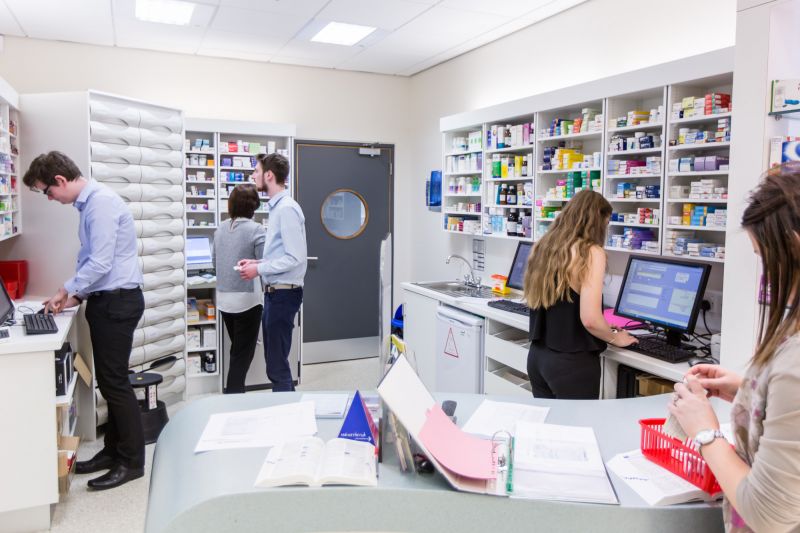Microsoft One Note Microsoft OneNote is a versatile digital notebook that can help you organise your study materials, collaborate with classmates, and keep track of your academic progress.
A quick guide to using OneNote
Getting Started with OneNote
Installation Ulster University offers free Microsoft Office access to students and it can be accessed through the Student Portal.
Download and install OneNote from the Microsoft Office website . It is available for Windows, macOS, iOS, and Android.
Sign In Use your university email to sign in.
Understanding the Interface
Notebooks Notebooks are the primary containers and you can create separate notebooks for each module or project.
Sections Sections are tabs within notebooks. Use sections to categorise different types of notes, such as lecture notes, tutorial notes, or notes for assignments.
Pages These are individual pages within sections. You can create pages for each lecture, or assignment.
Creating and Organising Notes
Instructions Add a Notebook : Click “Add Notebook” and name it according to your course or module.Create Sections : Right-click on the sidebar to add a new section. Name the section according to the academic week, topic, or the types of content.Add Pages : Click “Add Page” on the sidebar to create a new page. Assign a name to reflect the content, such as “Week 1 Lecture” or “Chapter 2 Notes.”
Making Notes
Instructions for making different types of notes Type Notes : Click anywhere on the page to start typing. OneNote allows freeform note-making, so you can click anywhere to start a new text box.Handwritten Notes : If you have a touchscreen device, use a stylus to write notes directly on the page.Audio and Video : Record lectures or tutorials by selecting “Insert” > “Audio” or “Video Recording.”
Enhancing your Notes
Tips for enhancing notes Tags : Use tags to highlight important information. Tags like “Important,” “To-Do,” and “Question” can be added from the “Home” tab.Tables and Lists : Organise information with tables or bullet/numbered lists. These can be inserted from the “Insert” tab.Drawings and Sketches : Use the drawing tools to add diagrams or sketches. This is especially useful for subjects like maths or science.
Collaboration and Sharing
Instructions Share Notebooks : Share your notebook with classmates or study groups by clicking “Share” and entering an email addresses.Real-Time Collaboration : Work on the same notebook simultaneously. Changes are synced in real-time.
Integrations and Add-Ons
Instructions Outlook Integration : Link your OneNote to Outlook to keep track of meetings and deadlines. Insert meeting details directly from Outlook into OneNote.Microsoft Teams : If you use Microsoft Teams, you can integrate OneNote for a seamless experience. Use it to keep notes from during online classes.
Search and Organisation
Instructions Search Function : Use the search bar to quickly find notes using a keyword, tag, or date.Tag Summary : Generate a summary of all tags to create a to-do list or to review key points.
Backing up your Notes
Instructions Cloud Syncing : OneNote automatically syncs with OneDrive, ensuring your notes are backed up and accessible from any device with internet access.Export Notes : Export notes as a PDF (and other formats) for offline use or submission. Go to “File” > “Export.”
Tips for Effective Note-Making
Instructions Consistency : Develop a consistent structure for your notes. Use headings, subheadings, and bullet points.Review Regularly : Regularly review and update your notes to reinforce your learning.Use Colour : Colour-code sections or tags to easily distinguish between different topics or priorities.
General Shortcuts Task Instruction
Create a new page
Ctrl + N
Create a new notebook
Ctrl + O
Open a notebook
Ctrl + O
Save
Ctrl + S
Print
Ctrl + P
Navigation Shortcuts Task Instruction
Go to the next page in the section
Ctrl + Page Down
Go to the previous page in the section
Ctrl + Page Up
Go to the next section
Ctrl + Tab
Go to the previous section
Ctrl + Shift + Tab
Switch between notebooks
Ctrl + G, then use arrow keys to select the notebook
Working with Content Task Instruction
Insert a link
Ctrl + K
Insert a table
Ctrl + T
Insert a file
Ctrl + Shift + F
Insert a picture
Alt + N, P
Insert a screen clipping
Windows + Shift + S
Help and Support If you need assistance, you can contact
The Student Success Centre uusuccess@ulster.ac.uk


















